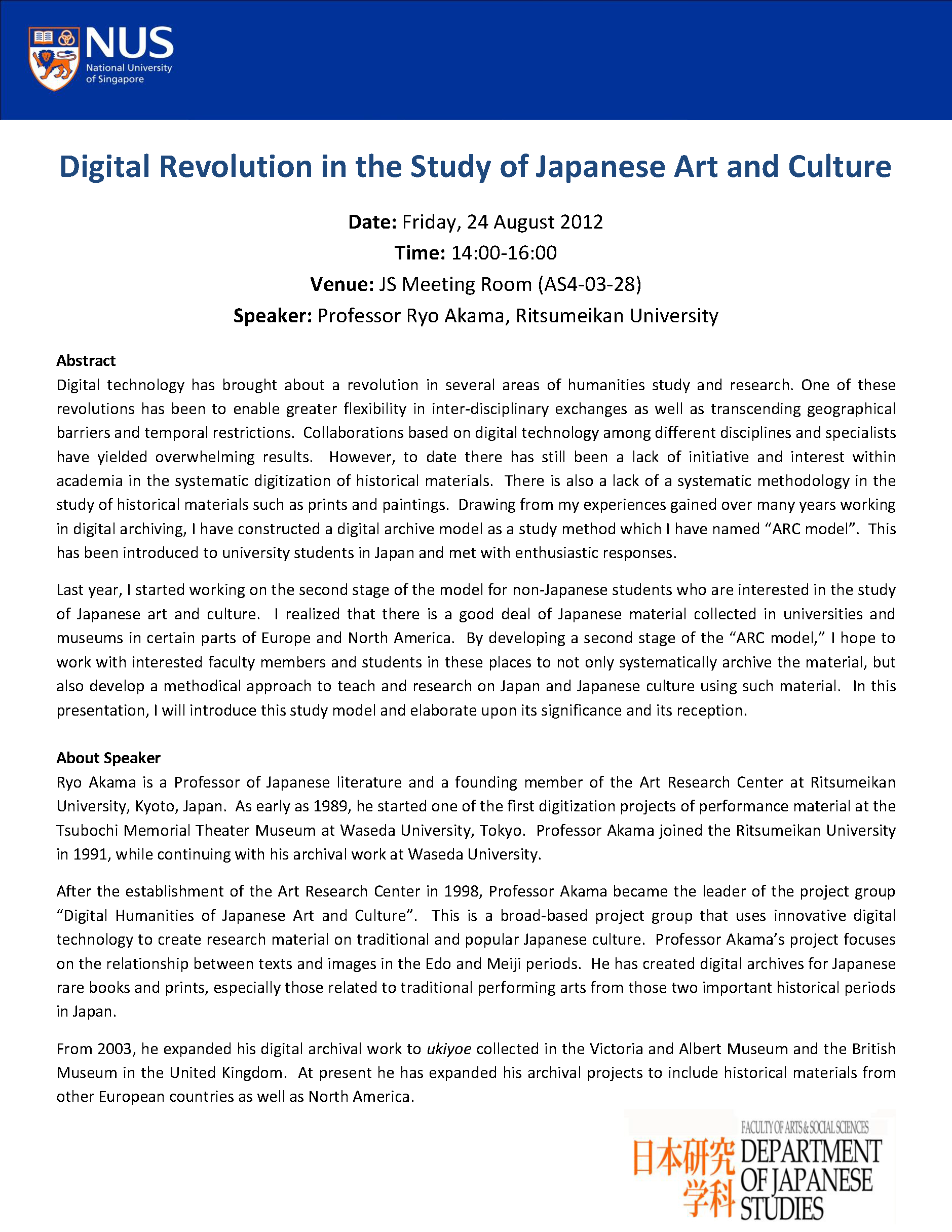Digital Revolution in the Study of Japanese Art and Culture
Abstract
Digital technology has brought about a revolution in several areas of humanities study and research. One of these revolutions has been to enable greater flexibility in inter-disciplinary exchanges as well as transcending geographical barriers and temporal restrictions. Collaborations based on digital technology among different disciplines and specialists have yielded overwhelming results. However, to date there has still been a lack of initiative and interest within academia in the systematic digitization of historical materials. There is also a lack of a systematic methodology in the study of historical materials such as prints and paintings. Drawing from my experiences gained over many years working in digital archiving, I have constructed a digital archive model as a study method which I have named “ARC model”. This has been introduced to university students in Japan and met with enthusiastic responses.
Last year, I started working on the second stage of the model for non-Japanese students who are interested in the study of Japanese art and culture. I realized that there is a good deal of Japanese material collected in universities and museums in certain parts of Europe and North America. By developing a second stage of the “ARC model,” I hope to work with interested faculty members and students in these places to not only systematically archive the material, but also develop a methodical approach to teach and research on Japan and Japanese culture using such material. In this presentation, I will introduce this study model and elaborate upon its significance and its reception.
About Speaker
Ryo Akama is a Professor of Japanese literature and a founding member of the Art Research Center at Ritsumeikan University, Kyoto, Japan. As early as 1989, he started one of the first digitization projects of performance material at the Tsubochi Memorial Theater Museum at Waseda University, Tokyo. Professor Akama joined the Ritsumeikan University in 1991, while continuing with his archival work at Waseda University.
After the establishment of the Art Research Center in 1998, Professor Akama became the leader of the project group “Digital Humanities of Japanese Art and Culture”. This is a broad-based project group that uses innovative digital technology to create research material on traditional and popular Japanese culture. Professor Akama’s project focuses on the relationship between texts and images in the Edo and Meiji periods. He has created digital archives for Japanese rare books and prints, especially those related to traditional performing arts from those two important historical periods in Japan.
From 2003, he expanded his digital archival work to ukiyoe collected in the Victoria and Albert Museum and the British Museum in the United Kingdom. At present he has expanded his archival projects to include historical materials from other European countries as well as North America.


